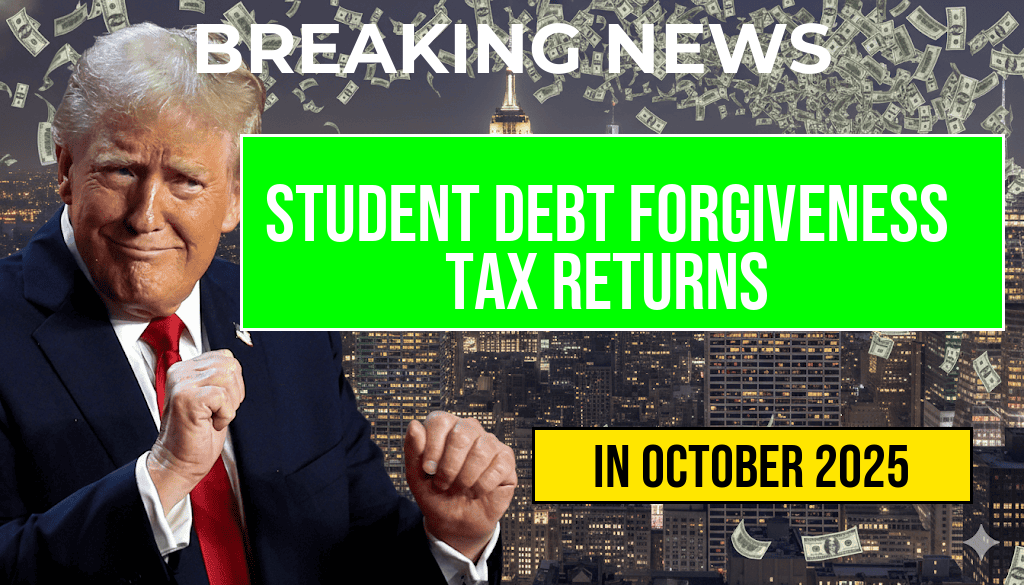Student Debt Forgiveness Tax Reinstates January 1: $20,000 Relief Ends
Effective January 1, 2024, the federal government has reinstated the taxability of student debt forgiveness under the current income-driven repayment (IDR) programs, ending a temporary relief measure that exempted up to $20,000 of forgiven student debt from taxation. The decision marks a significant shift for millions of borrowers who had benefited from the temporary exemption introduced in 2022, which aimed to alleviate financial burdens amid the pandemic. Now, forgiven amounts exceeding $10,000—$20,000 for Pell Grant recipients—will be considered taxable income, potentially resulting in substantial tax bills for some borrowers. This move has prompted widespread concern among student loan borrowers, advocacy groups, and financial advisors, who warn that the tax implications could undo some of the relief provided by debt forgiveness initiatives.
Background of Student Debt Forgiveness and Tax Policy
Student loan forgiveness programs have long been a contentious issue, balancing the desire to reduce debt burdens with the fiscal implications for borrowers and the government. Under the American Rescue Plan Act of 2021, Congress temporarily exempted up to $20,000 of student debt forgiveness from federal income tax, a provision designed to make debt relief more financially accessible for many borrowers. This exemption was set to expire at the end of 2025, but the Biden administration extended the relief for the 2022 and 2023 tax years as part of broader efforts to ease pandemic-related economic stress.
However, as of January 1, 2024, the tax exemption no longer applies. The Department of the Treasury confirmed that forgiven student loan amounts will now be treated as taxable income, aligning with the standard tax code. This reinstatement affects borrowers who have recently had their debt forgiven through income-driven repayment plans, Public Service Loan Forgiveness (PSLF), or other federal programs.
Impact on Borrowers and Potential Tax Burdens
| Income Bracket | Tax Rate | Tax Due on $20,000 Forgiveness |
|---|---|---|
| Low Income (<$50,000) | 10-12% | $2,000 – $2,400 |
| Middle Income ($50,000–$100,000) | 22-24% | $4,400 – $4,800 |
| High Income (>$100,000) | 32-37% | $6,400 – $7,400 |
For borrowers with significant debt forgiveness, this increase in taxable income could translate into thousands of dollars owed during tax season. Experts warn that failure to plan for this change may result in unexpected liabilities, especially for those with limited savings or income fluctuations. Some financial advisors suggest that borrowers consider setting aside funds or consulting tax professionals to navigate the upcoming tax obligations.
Policy Reactions and Legal Challenges
The decision to reinstate the taxability of student debt forgiveness has elicited mixed reactions. Advocates for student borrowers argue that the exemption was a crucial tool during the pandemic, providing relief when economic stability was uncertain. They contend that reimposing taxes on forgiven debt could disproportionately impact lower- and middle-income borrowers, undermining broader debt relief efforts.
Conversely, policymakers and fiscal conservatives emphasize the importance of maintaining consistent tax policies. They argue that forgiven debt constitutes taxable income under existing law, and the temporary exemption was a legislative exception. Some legal challenges have been filed, questioning the authority of the Department of the Treasury to impose these tax rules retroactively, but such efforts face significant hurdles given the current legal framework.
Looking Ahead: Borrowers’ Options and Next Steps
- Tax Planning: Borrowers are encouraged to review their upcoming tax obligations and consider consulting with tax professionals to develop strategies for managing increased liabilities.
- Debt Management: Those anticipating forgiveness should verify whether their forgiven amount will be subject to tax and plan accordingly to avoid surprises during tax season.
- Legislative Developments: Stakeholders are closely monitoring potential legislative proposals that could modify or extend tax exemptions related to student debt forgiveness.
For more detailed information on federal student loan programs and recent policy changes, resources like the Wikipedia page on Student Loans in the United States and official updates from the Federal Student Aid website provide valuable guidance.
As the new year begins, borrowers facing increased tax obligations should stay informed about their options and seek professional advice to navigate the evolving landscape of student debt relief.
Frequently Asked Questions
What is the significance of the January 1 date regarding student debt forgiveness?
The student debt forgiveness program that provided up to $20,000 in relief will end on January 1, meaning borrowers will no longer be able to benefit from this tax relief after this date.
How does the reinstatement of student debt forgiveness affect taxpayers?
With the forgiveness ending, some borrowers may face tax implications on the forgiven amount, as the relief previously provided could have been considered tax-free. Now, the forgiven amount may be treated as taxable income.
Who is eligible for the student debt relief program?
The student debt relief was available to borrowers who met specific income and loan criteria, typically targeting those with federal student loans and incomes below certain thresholds.
Will the ending of the debt relief impact future student loan forgiveness programs?
The end of this relief may influence future policy discussions on student loan forgiveness and could lead to revised or new programs being implemented by policymakers.
What should borrowers do if they are affected by the ending relief date?
Borrowers should review their loan status, understand potential tax obligations, and consider consulting a financial advisor to plan accordingly before the relief ends on January 1.

Leave a Reply